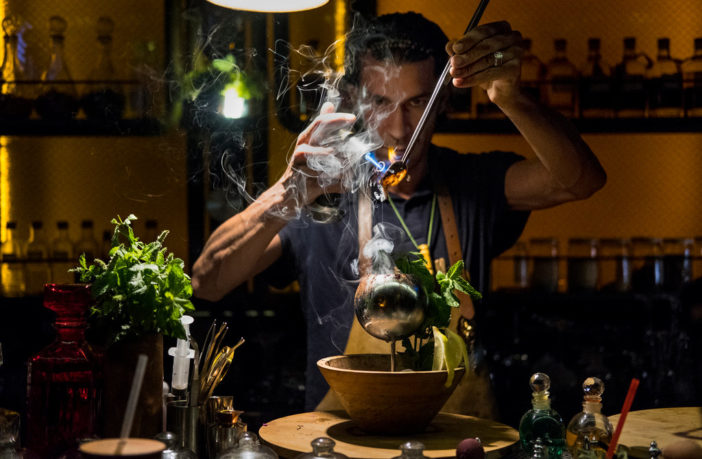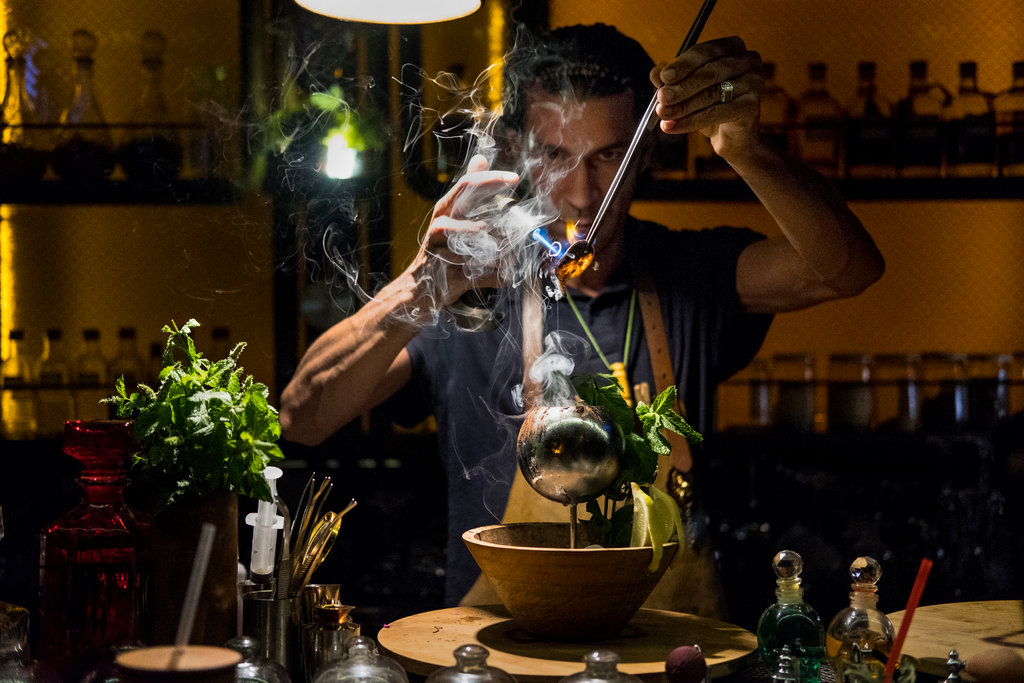The New York Times
The ancient Moroccan city is being reinvigorated by local entrepreneurs opening their own cafes, bars and riads, while embracing tradition.
Said Bourrich creates a cocktail at Le Baromètre, the only speak easy-style cocktail bar in Marrakesh, where homegrown creative types are transforming the city. Daniel Rodrigues for The New York Times.
Twenty years after my first visit, some things about Marrakesh remain remarkably similar.
The medina — the labyrinthine old part of the city — is still partly populated by stooped men in djellabas and the occasional donkey-led cart. The late afternoon light hits the high walls of its alleys in warming hues of yellow and orange. It still feels, at times, that everyone wants to sell you something.
Around dusk, the Jemaa el Fna, the medina’s main square, still goes through the same transformation: Juice vendors and the occasional snake charmer are replaced by a dizzying array of food stalls and circles of musicians.
Some things, though, have changed. Those donkey carts now share space with cheap scooters, which spin around corners spewing growls and plumes of exhaust. (My Moroccan translator and travel companion, Abdellah Aboulhamid, told me that, owing to the spike in accidents, a wing of the city hospital had adopted a nickname: C90, the scooter’s model name.) In 1998, taking a photo of one of those musical performances in the square meant interrupting it while one of the musicians demanded payment. Today, payment is demanded for cellphone videos.








